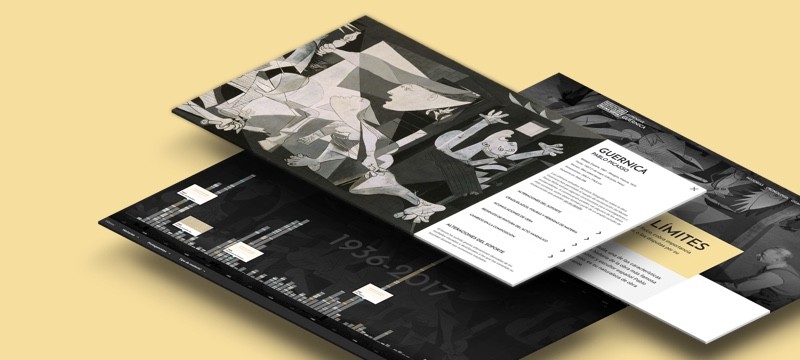The painting was acknowledged at once as an image of the best synthesis and drama of the war in Spain and the latest and greatest work by the artist on the landscape of international art. Any museum’s or institution’s chances of exhibiting the painting in its galleries was a show of its management capacity and granted it instant prestige.
Guernica’s symbolic and political value cannot be separated from its artistic value and its impact on art practices and the narrative of twentieth-century art which, by and large, has been traced from museums. To this effect, worthy of note is the painting’s inclusion as the final piece in the retrospective Picasso: Forty Years of His Art, held at New York’s Museum of Modern Art (MoMA) in 1939. Against this backdrop, Guernica was the work that marked the end of a project on European avant-garde movements.
Alfred H. Barr Jr., the then director of MoMA and curator of the exhibit, became aware of Picasso’s great work through mediums that included the postcard of Guernica he was sent from Paris in September 1937.

Guernica at the MoMA
The outbreak of the Second World War was the reason behind the painting being sent to the United States, where it would remain on loan at the museum from May 1939, at the request of the artist. From this moment on, and until September 1981 — when Guernica and its associated works were handed over to the Spanish government — MoMA held periodic shows on the artist, as well as releasing publications and inserting the painting in its temporary exhibitions, where it held a privileged position, the museum reaping the rewards as custodian of the artwork of the century.
Conflicts and instability
Without forgetting that Guernica belonged to Picasso, the international institutions wishing to display the painting inside their galleries, upon submitting a loan request to the artist, were large in number. Often advised by the MoMA over the work’s state of preservation, Picasso decided, out of choice or interest, that it would be on view in some cities and contexts, but not in others, for instance in Caracas in 1948. From the outset, Picasso strongly opposed its loan for an exhibition devoted to his work; a decision, in all likelihood, based on Venezuela’s political climate at the time, which resulted in a coup d’état that same year. In this regard, Guernica became an icon that synthesised the political and artistic debates in the latter half of the twentieth century — the turmoil and destabilisation of the geographical-political axes were reflected in the art world, for instance with the rupture of canons or the reconsideration of languages and mediums. Moreover, as a support for and purveyor of political messages — the Vietnam War a case in point — the museum institution was called into question to act from its own sphere in the controversies surfacing from the painting’s status as an anti-war icon, in some cases resulting in the neutralisation of its iconic currency.
The arrival to Spain
On the symbolic plane and the setting of Spain, Guernica depicted the image of the Civil War. Yet there was also a desire to interpret it as redemption for the Spanish people, particularly after the death of Francisco Franco in 1975 and the ensuing transition to democracy. The constant work to elucidate the picture’s legitimate ownership, already under way in 1953 courtesy of Luis Araquistáin — the Spanish ambassador to France whose appointment saw him take charge of Picasso’s commission and payment for the work — and, most importantly, Javier Tusell from 1979 onwards, reflect its value as a symbol of the end of Francoism and the dictatorship. Its installation in the Casón del Buen Retiro, adjoining the Museo del Prado in 1981, closed the twofold gesture of having fulfilled the artist’s wishes and pacifying Spanish art history, granting organic continuity and creating a Velázquez, Goya, Picasso triad – a gesture could have neutralised the political quality of the painting. Its transfer to the Museo Nacional Centro de Arte Reina Sofía in July 1992 placed it inside a process of modernisation for Spain that was also apparent in the overhaul of museum discourses. From that moment on, Guernica has played a pivotal role in shaping both the Museo’s collection and international art debates.












